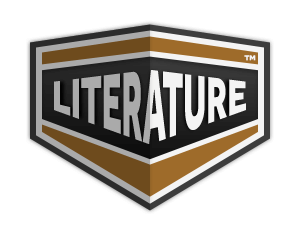The Picture Page #5
"The Picture" is a poignant short story by Russian author Aleksandr Kuprin that explores themes of art, beauty, and the complex relationships between individuals. The narrative centers around a painting that captivates the protagonist, leading him to reflect on his own experiences and emotions. Through vivid descriptions and deep psychological insight, Kuprin delves into the power of art to evoke memory and desire, ultimately illuminating the profound connection between life and artistic expression. The story serves as a meditation on the nature of human perception and the lasting impact of aesthetic encounters.
"Well, but all the same, what is it?" "Oh, it's nothing, I tell you. The stupid bank in which my money is...." "Well?" "It's failed. And now I've nothing of all my property except what I have here with me." "Oh, that's really nothing," said Rozanof, and he at once called Marya Gavrilovna, and they had the upper part of their house put in order so that the prince might come and live with them. X So the prince settled down to live with Rozanof. He used to lie on the sofa all day, read French novels and polish his nails. But he soon got tired of this, and one day he said to his friend: "Do you know, I once learnt to paint!" Rozanof was surprised. "No, did you?" "Yes, I did. I can even show you some of my pictures." Rozanof looked at them, and then he said: "You have very good capabilities, but you have been taught in a stupid school." The prince was delighted. "Well," he asked, "if I began to study now, do you think I should ever paint anything good?" "I think it's very probable indeed." "Even if I've been an idler up till now?" "Oh, that's nothing. You can overcome it by work." "When my hair is grey?" "That doesn't matter either. Other people have begun later than you. If you like, I'll give you lessons myself." So they began to work together. Rozanof could only marvel at the great gift for painting which the prince displayed. And the prince was so taken up by his work that he never wanted to leave it, and had to be dragged away by force. Five months passed. Then, one day, Rozanof came to the prince and said: "Well, my colleague, you are ripening in your art, and you already understand what a drawing is and the school. Formerly you were a savage, but now you have developed a refined taste. Come with me and I will show you the picture I once gave you a hint about. Until now I've kept it a secret from everybody, but now I'll show you, and you can tell me your opinion of it." He led the prince into his studio, placed him in a corner from whence he could get a good view, and drew a curtain which hung in front of the picture. It represented St. Barbara washing the sores on the feet of lepers. The prince stood for a long time and looked at the picture, and his face became gloomy as if it had been darkened. "Well, what do you think of it?" asked Rozanof. "This----" answered the prince, with rancour, "that I shall never touch a paint-brush again." XI Rozanof's picture was the outcome of the highest inspiration and art. It showed St. Barbara kneeling before the lepers and bathing their terrible feet, her face radiant and joyful, and of an unearthly beauty. The lepers looked at her in prayerful ecstasy and inexpressible gratitude. The picture was a marvel. Rozanof had designed it for an exhibition, but the newspapers proclaimed its fame beforehand. The public flocked to the artist's studio. People came, looked at St. Barbara and the lepers, and stood there for an hour or more. And even those who knew nothing about art were moved to tears. An English-man, who was in Moscow at the time, a Mr. Bradley, offered fifteen thousand roubles for the picture as soon as he looked at it. Rozanof, however, would not agree to sell it. But something strange was happening to the prince at that time. He went about with a sullen look, seemed to get thinner, and talked to no one. He took to drink. Rozanof tried to get him to talk, but he only got rude answers, and when the public had left the studio, the prince would seat himself before the easel and remain there for hours, immovable, gazing at the holy Barbara, gazing.... So it went on for more than a fortnight, and then something unexpected happened--to tell the truth, something dreadful. Rozanof came home one day and asked if Prince Andrey were in. The servant said that the prince had gone out very early that morning, and had left a note. The artist took the note and read it. And this was what was written. "Forgive my terrible action. I was mad, and in a moment I have repented of my deed. I am going away, never to return, because I haven't strength to kill myself." The note was signed with his name. Then the artist understood it all. He rushed into his studio and found his divine work lying on the floor, torn to pieces, trampled upon, cut into shreds with a knife.... Then he began to weep, and said: "I'm not sorry for the picture, but for him. Why couldn't he tell me what was in his mind? I would have sold the picture at once, or given it away to someone." But nothing more was ever heard of Prince Andrey, and no one knew how he lived after his mad deed.
Translation
Translate and read this book in other languages:
Select another language:
- - Select -
- 简体中文 (Chinese - Simplified)
- 繁體中文 (Chinese - Traditional)
- Español (Spanish)
- Esperanto (Esperanto)
- 日本語 (Japanese)
- Português (Portuguese)
- Deutsch (German)
- العربية (Arabic)
- Français (French)
- Русский (Russian)
- ಕನ್ನಡ (Kannada)
- 한국어 (Korean)
- עברית (Hebrew)
- Gaeilge (Irish)
- Українська (Ukrainian)
- اردو (Urdu)
- Magyar (Hungarian)
- मानक हिन्दी (Hindi)
- Indonesia (Indonesian)
- Italiano (Italian)
- தமிழ் (Tamil)
- Türkçe (Turkish)
- తెలుగు (Telugu)
- ภาษาไทย (Thai)
- Tiếng Việt (Vietnamese)
- Čeština (Czech)
- Polski (Polish)
- Bahasa Indonesia (Indonesian)
- Românește (Romanian)
- Nederlands (Dutch)
- Ελληνικά (Greek)
- Latinum (Latin)
- Svenska (Swedish)
- Dansk (Danish)
- Suomi (Finnish)
- فارسی (Persian)
- ייִדיש (Yiddish)
- հայերեն (Armenian)
- Norsk (Norwegian)
- English (English)
Citation
Use the citation below to add this book to your bibliography:
Style:MLAChicagoAPA
"The Picture Books." Literature.com. STANDS4 LLC, 2025. Web. 5 Feb. 2025. <https://www.literature.com/book/the_picture_4016>.








Discuss this The Picture book with the community:
Report Comment
We're doing our best to make sure our content is useful, accurate and safe.
If by any chance you spot an inappropriate comment while navigating through our website please use this form to let us know, and we'll take care of it shortly.
Attachment
You need to be logged in to favorite.
Log In